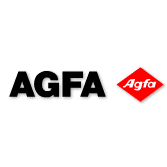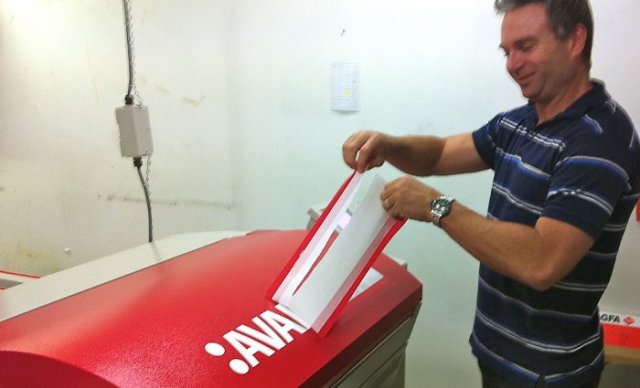The product replaced the manufacturer’s Xcalibur 45 range, which was the first platesetter to use Grating Light Valve (GLV) technology, which was previously used in high definition TV displays. It was also launched with the Apogee X workflow, making it a hit with printers. With the Avalon, Agfa knew that it had to raise the bar again.
“The new machine, although outwardly similar to the Xcalibur 45 range, had a large number of improvements made,” says John Wood, systems specialist at Agfa UK. “The machine could image conventional and chemistry-free plates automatically.”
Agfa introduced a new generation of GLV units, the GLV II, to image the plates. This allowed speedy imaging of chemistry-free plates. GLV images a swath of laser lines onto the rotating drum to image the plate. “It results in a low rotational speed, which means there are fewer problems with balancing,” explains Wood.
Autofocus was used to eliminate hotspots in images, which could be caused from variations affecting the image, such as dust or debris. The newer generation GLV also improved the control of the laserbeam.
Host of additions
Since its launch, the machine has been fitted with a raft of new features, including Agfa’s HD imaging head, automatic calibration and an advanced operator control terminal. Working in tandem with the GLV, the automatic calibration feature maintained laser uniformity by detecting variations.
A major benefit of the new range was that it was broad enough to suit everyone from the smallest B1 printer to the largest high-volume firm. There was an option for machine matching so that high-productivity sites could image and re-image plates without tracking where they were first imaged. Agfa also launched a B2-sized model in October 2006 that was capable of providing higher productivity for its target market.
Rival machines included the Lotem 800, Topsetter and Platerite 8000 series. But the main strengths of the Avalon, according to Wood, were its fast and reliable imaging with plate pre-staging, as well as a small footprint.
A new Operator Control Terminal was also added to give the operator more information about the machine and its platemaking history.
The models in the range went up in speed: the LE had a production speed of 10 plates per hour (pph); the E could image 15pph; the S managed 20pph; the XT could go up to 30pph; and the XXT was 40pph. All models were available as job level – which uses a single cassette – semi-automatic, or fully automatic.
Multiple configurations
There were three configurations in the range: the SF, standing for small format; LF, for large format; and VLF, for very large format. An LF Violet version was also unveiled in September 2005.
Production of the machine stopped in early May, but the manufacturer has announced it will retain spare parts for the next seven years.
Supplier: Agfa Australia
Comment below to have your say on this story.
If you have a news story or tip-off, get in touch at editorial@sprinter.com.au.
Sign up to the Sprinter newsletter


